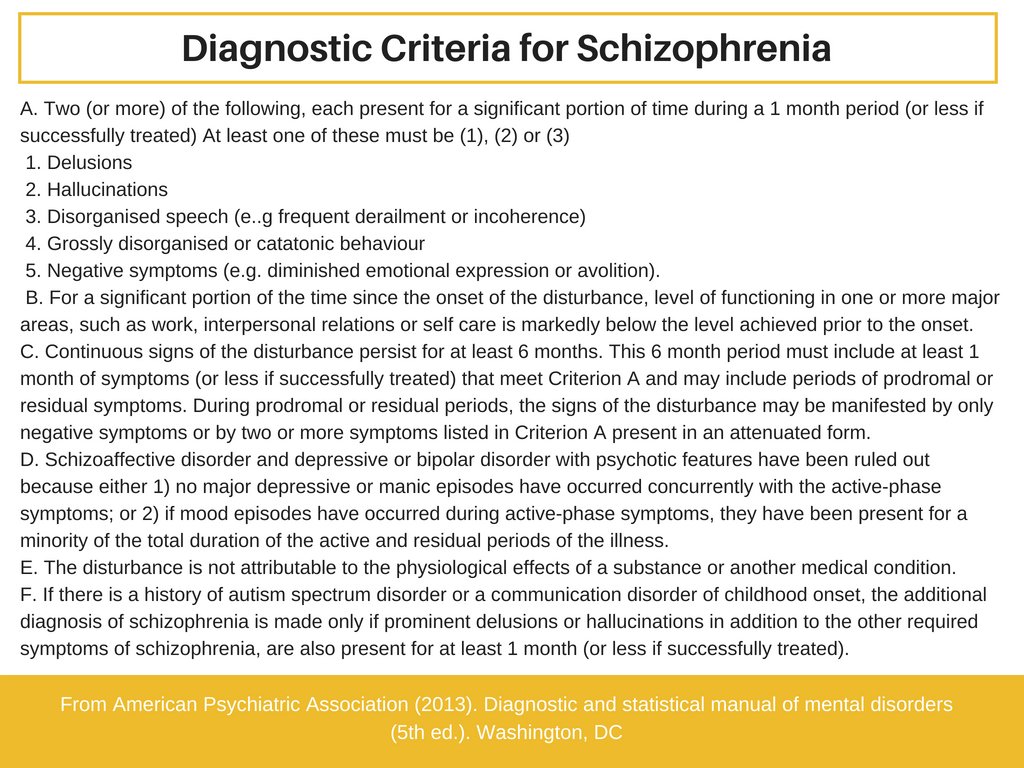What is Schizophrenia?
A man roams the aisles of the grocery store while his eyes continuously dart from left to right, looking out for members of the mafia who are out to get him. A woman sitting at home watching television struggles to pay attention to her favourite show over the voice of her recently deceased father taunting her about how ugly she is. You strike up a conversation with a man at your local footy club however when you ask him which team he supports he proceeds to tell you about his cousins pet rabbit instead. All of these people may potentially have schizophrenia. While many of us have heard of schizophrenia before it is still a highly misunderstood mental illness and one that carries a heavy and dogmatic stigma with it. So what really is schizophrenia and how does it come about?
Schizophrenia is broadly defined as a chronic mental disorder that can disrupt a person’s perception, thought, speech, movement and almost every aspect of daily life. Schizophrenia is a debilitating mental illness affecting approximately 0.2 to 1.5% of the population and has an enormous emotional and even financial toll on the sufferer themselves as well as their loved ones. While there are a number of subtypes of schizophrenia that fall under the category of schizophrenia spectrum disorders, in today’s blog I will focus purely on schizophrenia.
What are the symptoms of schizophrenia?
The symptoms of schizophrenia are typically categorised into positive symptoms (more obvious signs of psychosis), negative symptoms (absence or insufficiency of normal behaviour) and disorganised symptoms (erratic behaviour that affects speech motor and emotional reactions)
Positive symptoms
Delusions
Delusions refer to a firmly held belief that is maintained despite being contradicted by reality. The motivational view of delusions suggests that these occur as a defence mechanism to deal with distress; conversely the deficit view argues that delusions are the result of brain abnormalities.
Hallucinations
Hallucinations refer to the experience of sensory events without any input from the environment. Researchers examining brain activity during auditory hallucinations found that the part of the brain most active during hallucinations was Broca’s area – an area of the brain that is involved in speech production. This suggests that people who are hallucinating may in fact be listening to their own thoughts however experience confusion when interpreting this ‘inner voice’.
Negative symptoms
Avolition: This refers to an inability to initiate and follow through with seemingly everyday activities. People experiencing avolition may show little interest in eating, showering, socialising etc.
Alogia: This refers to the absence of speech; people experiencing alogia may exhibit brief replies with little content and may seem uninterested in conversation.
Anhedonia: This refers to a lack of pleasure of activities such as eating, socialising or sexual interactions.
Affective flattening: People experiencing affective flattening may show little or no emotion, may stare vacantly and speak in a flat manner. These people may seem uninterested or unaffected by the events occurring around them.
Disorganised symptoms
Disorganised speech: People with disorganised speech may jump from topic to topic or speak illogically making it very difficult to hold a conversation.
Inappropriate affect and disorganised behaviour:People experiencing inappropriate affect may exhibit unpredictable emotional responses such as laughing or crying at inappropriate times. People exhibiting disorganised behaviour may act out behaviours that appear bizarre or have no purpose.
Catatonia: refers to motor dysfunction ranging from extreme agitation to immobility however this is not its own diagnosis.
So what are its causes?
Genetics: As with most mental illnesses there appears to be a link between both genetics and environment in the onset and development of schizophrenia however the research does appear to suggest that genetics do appear to have a larger influence than the environment. A recent study following twins from both the Danish Twin Register and the Danish Psychiatric Research Register over the course of several years found that the estimated heritability of schizophrenia was approximately 79%.
Furthermore, it has been found that even when raised away from their biological parents children of parents with schizophrenia have a higher chance of developing the disorder however a gene environment interaction was observed in which a good home environment may reduce the risk of schizophrenia.
Environment: While environmental causes are not as conclusive, it has been observed that people whose onset of schizophrenia dated within a week experienced a high number of stressful events in the weeks prior to them exhibiting signs and symptoms. Furthermore, prenatal exposure to influenza has been linked with the development of schizophrenia later on in life.
What are the treatment options?
Antipsychotic medication is typically the primary method of treatment for schizophrenia. Neuroleptics assist people to think more clearly and reduce hallucinations and delusions. People experiencing schizophrenia typically benefit from community support, supportive employment, discussions around illness management and behavioural family therapy and psycho-education. While some people with schizophrenia may benefit from psychological counselling the research does not support this as an effective treatment option.
Schizophrenia is a chronic, severe and debilitating mental illness that has a vast impact on the every day life of the sufferer themselves as well as their loved ones. By understanding more about this mental illness we can work to reduce the stigma around it and work towards providing these individuals with appropriate treatment and support.



